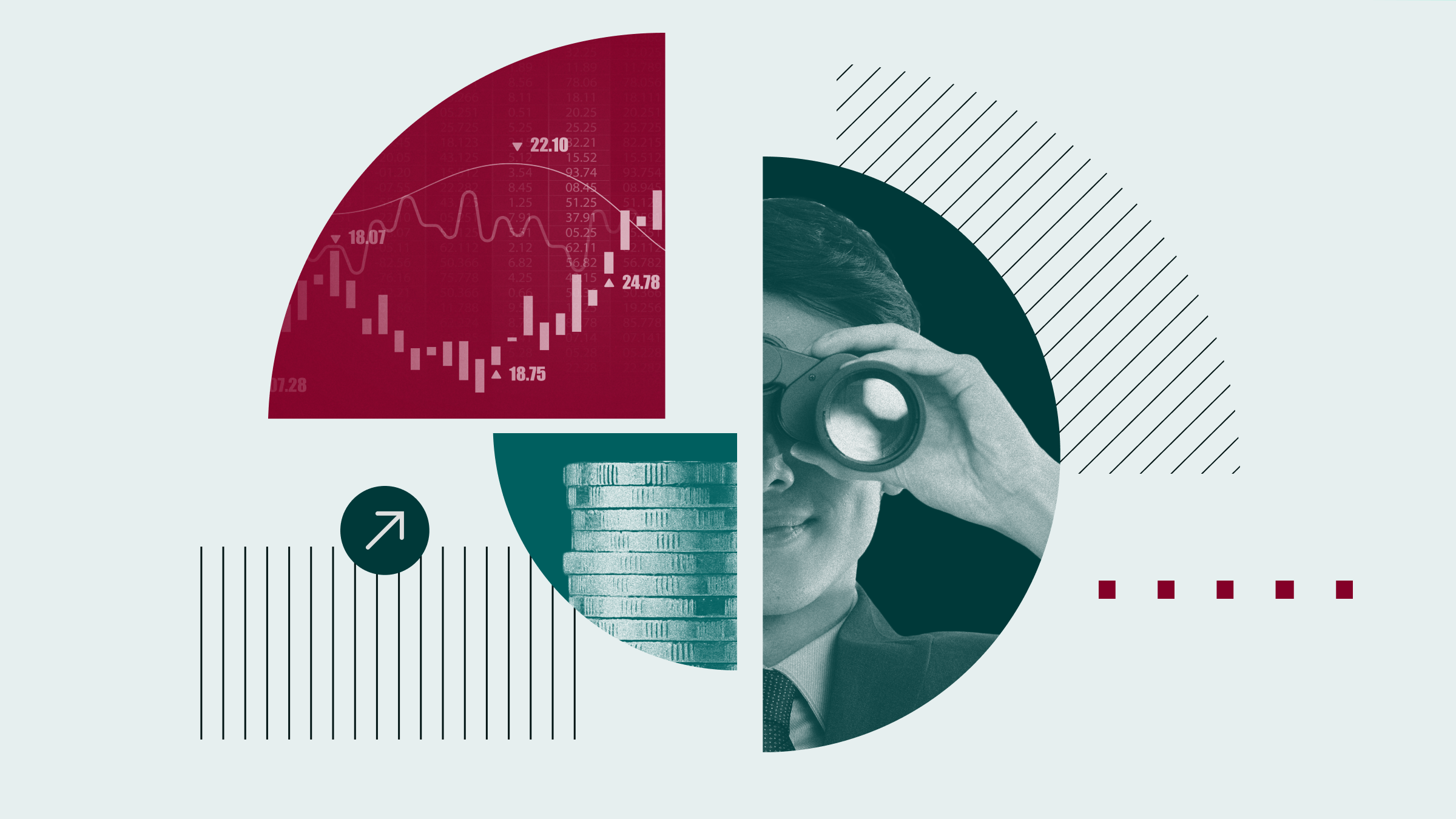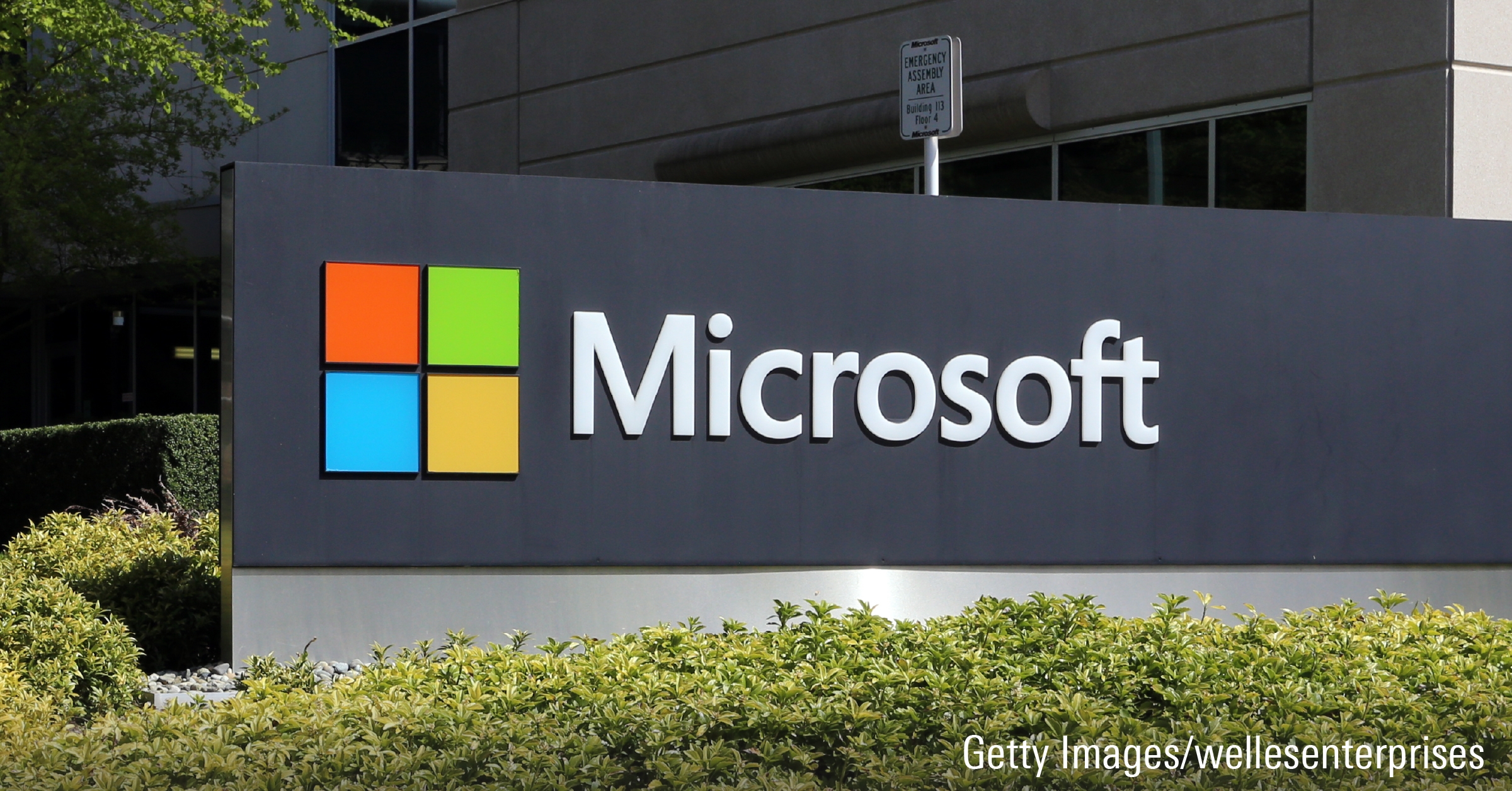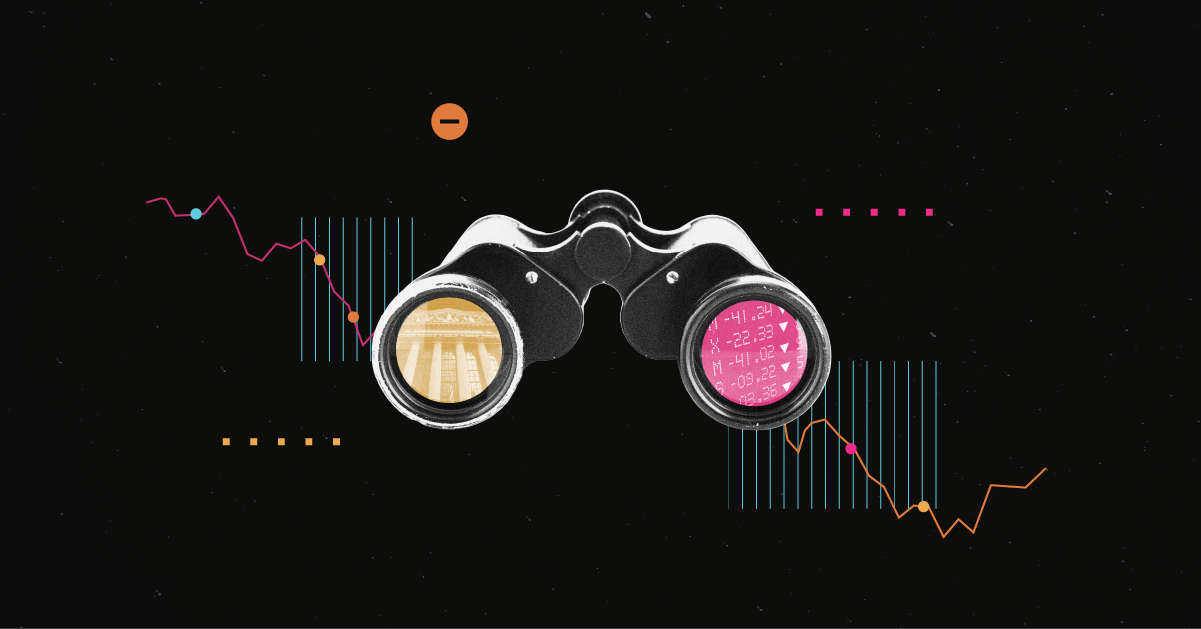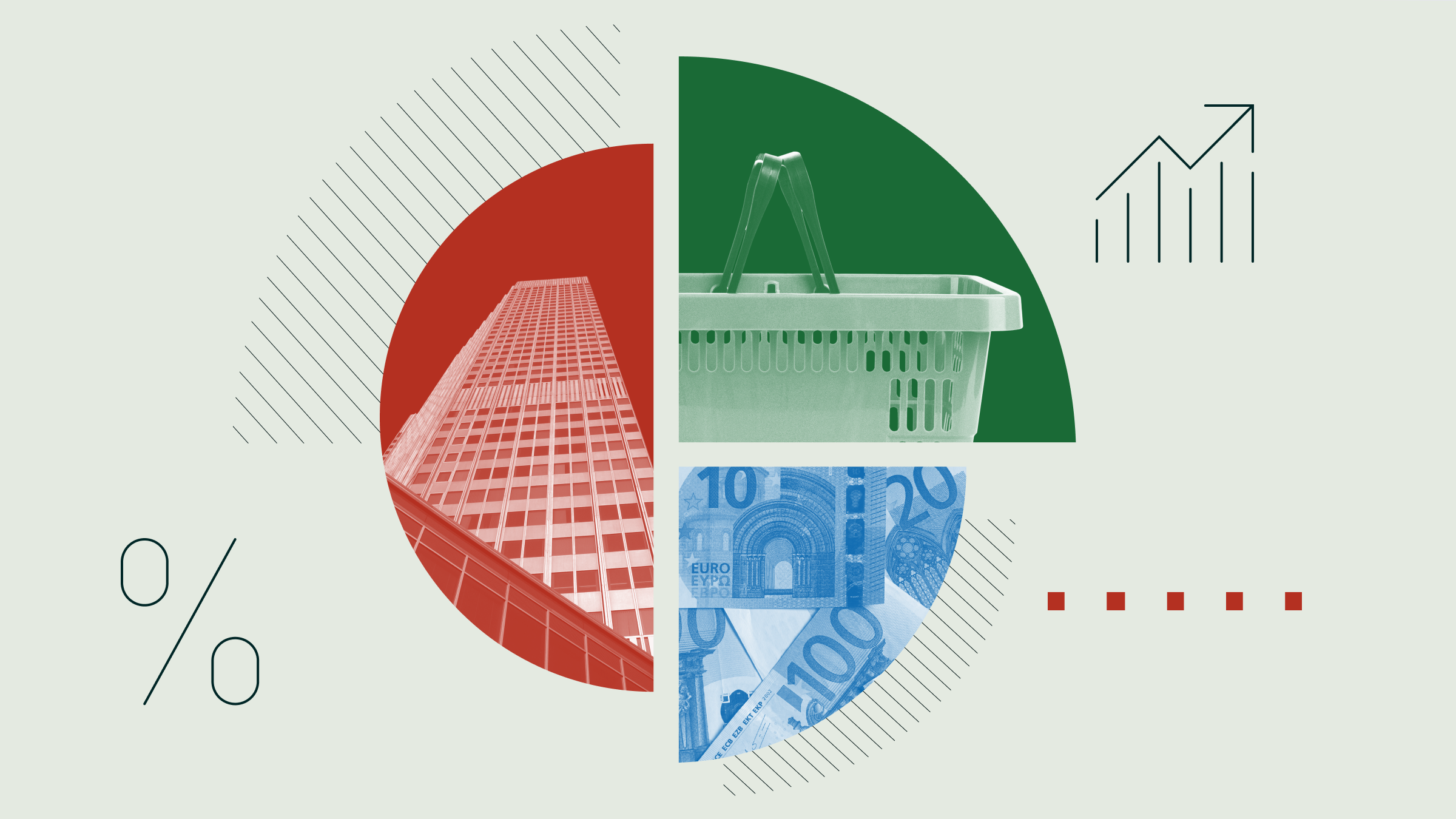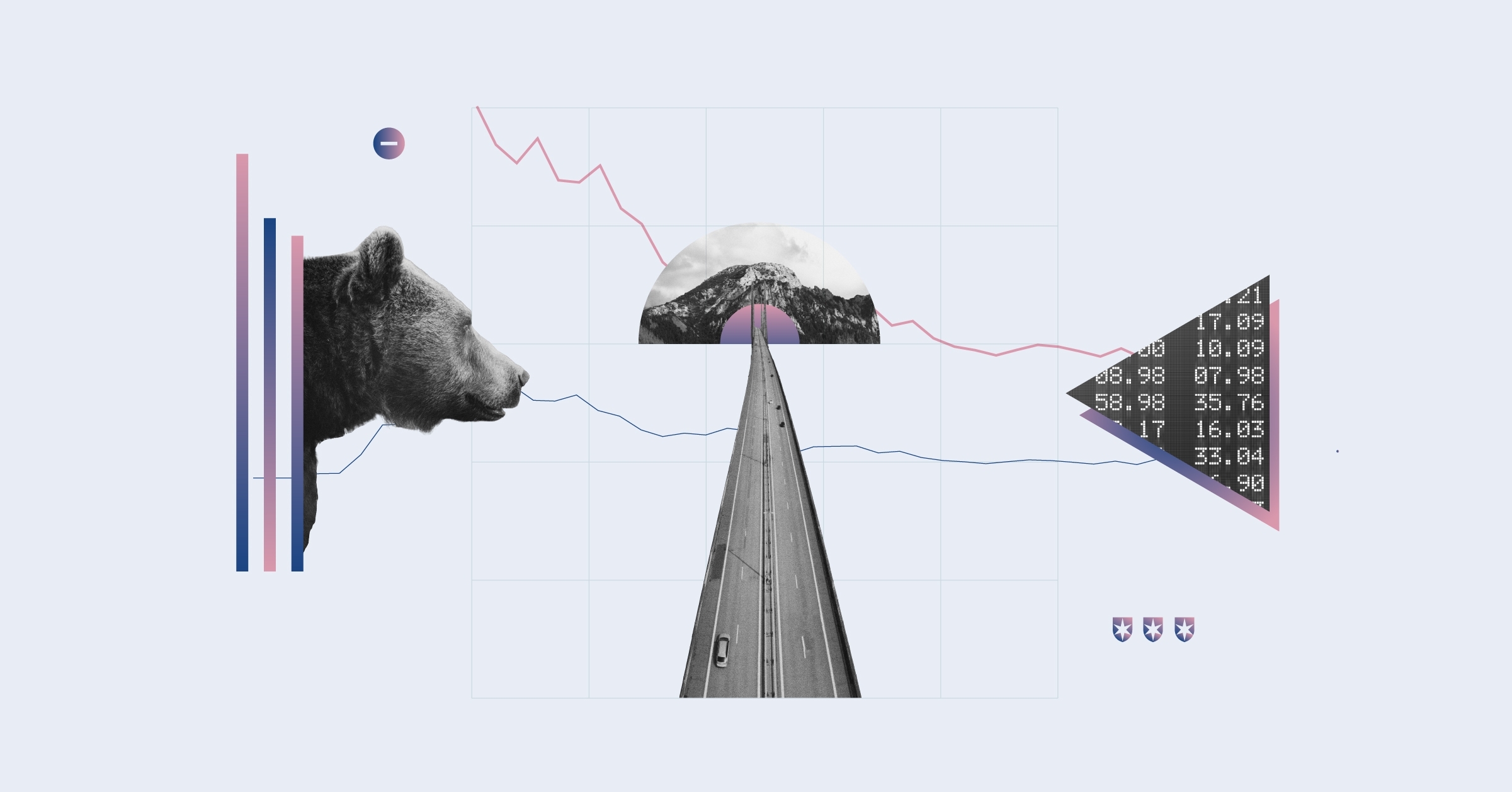We view overall stock market valuations as stretched, with close to 60% of our universe trading above our fair value estimates in October. We find evidence, however, that the presence of economic moats is increasing among the world’s largest firms, suggesting that elevated profit margins relative to historical levels may not completely disappear when the business cycle turns.
While we do expect a partial reversion to the historical valuations of the past as economic pressures build, the durability and defensibility of the largest firms’ competitive positions suggest that profitability levels will not fully revert to historical midcycle levels.

- source: Morningstar Analysts
Moats Protect High Profit Levels
As natural skeptics, we explore the glass-half-empty side of things in a bull market. As we examine profit margins that are running at peak levels relative to the past few decades, we believe there are some longer-term structural shifts in globalization that should continue to hold costs down. Other dynamics, however, appear more cyclical, including low interest rates, low inflation, and lagging wage growth coming out of the recession, all of which have helped prime margins for the majority of firms. Eventually, costs are likely to rise in the form of wage and material inflation, along with more expensive financing. Further, the capital cycle suggests that we are at a point where firms will expand deeper into areas of high profitability, opening up more price competition.
Within this context, we find it important to examine the staying power of these profit levels within our moat analysis. Firms with moats hold structural advantages that should increase their ability to defend against increasing costs and competition. To do this, we looked at the largest 100 companies by market capitalization since the 1980s. As profit margins have expanded over this time frame ( EXHIBIT 2 ), an increasing representation of moats among these large firms helps support their elevated margins. The high levels of profitability suggest a moderation in the intensity and success of competition. It’s not that firms are colluding to impair competitive forces to capture monopoly profits. Rather, we see an increase in the durability and defensibility of the largest firms’ competitive positions.
Harvesting Greater Profits
Over the past three decades, the moat composition of the largest 100 firms has shifted toward wider moats. We base our historical analysis of moats on our current moat methodology and retroactively apply our framework to determine the moats of the leading companies in 1987. While moats relate more to the spread between returns and the cost of capital, and less to absolute profit margins, the increased representation of wider-moat firms likely contributed to the elevated levels of overall profitability.
Given highly competitive markets, we expect that the increasing profits seen over the past few decades should be competed away as rivals are enticed to participate in each market. Some businesses, however, have structural advantages that enable a stronger defense against competition, enabling high profits over an extended period. As competitive advantages have improved for the leading firms, we believe the ability to shield profits from normal competition has increased, enabling higher overall profits. The high concentration of wide and narrow moats among the largest 100 firms suggests that their elevated profit margins partly reflect the successful defense of competitive positions. In analysis looking at the past 10 years, wide-moat firms have generated more than triple the operating margins of no-moat firms, while narrow-moat firms have posted more than double the returns of no-moat companies. As the moat rating improves, the margins expand, supporting the importance of moats in protecting profits ( EXHIBIT 3 ).

- source: Morningstar Analysts
This is driven by an increase in wide-moat healthcare and technology firms. Drug companies lead the wide-moat healthcare gains, partly due to a shift from a conglomerate healthcare structure (including no-moat chemicals companies) toward a focus on wide-moat drug development.
The gains within the technology sector have largely stemmed from a transition from a less moatworthy hardware focus toward a software and data direction that is more conducive to moats. The free cash flow yields/sales ratios1 of today’s largest technology companies exemplify the strength of companies with moats: wide-moat Alphabet GOOGL is at 29% and wide-moat Facebook FB is at 43% (generated in 2016). In contrast, in 1987, no-moat Hewlett-Packard had a ratio of only 8%.
While the presence of wide-moat firms among the top 100 has increased over the past three decades, the number of no-moat firms has fallen. Overall, the representation of no-moat firms by market capitalization has declined to 9% from 19% as firms with less competitive advantages have fallen behind those in a stronger position.
Overall, when applying the average profit levels by moat rating, the shifts in moats appear to have contributed over 200 basis points of operating margin expansion over the past three decades.
Sector Composition Change
Beyond changes in moat representation, the composition of the 100 largest firms (by market capitalization) traded on U.S. exchanges has changed dramatically. Only 23 companies appear on both the 1987 and 2017 lists of the 100 largest firms. Notably, the rotation of firms has not been evenly spread across sectors, and the list now includes significantly more firms from the financial-services, technology, and healthcare sectors. In contrast, many of the departed names were concentrated in the consumer cyclical, industrials, and utilities sectors.
Significant changes occurred within sectors, too. Several weak no-moat firms of 1987 in technology, autos, basic materials, and publishing dropped off the list, making way for more profitable firms. The historical weakness in technology is pronounced, with 1987 leaders Eastman Kodak (KODK) , Sony (SNE) , Xerox (XRX) , and Hewlett-Packard all lacking moats and losing relative competitive positioning. Meanwhile, many of the wide-moat-rated firms that are no longer on the list were acquired, including Pharmacia, Gillette, Wyeth, Ralston Purina, Anheuser-Busch, Seagram, Schering-Plough, and Warner-Lambert.
Shifting Moat Sources
Beyond the increasing presence of firms with moats on the largest-100 list, moat sources of these companies are evolving, too. More firms on the list in 2017 derive their moats from network effect, intangible assets, and switching costs. This is consistent with the increased presence of technology and healthcare firms, which tend to earn their moats from these sources.
Additionally, these moat sources support higher returns on capital. Moat sources with stronger fundamentals have seen increased representation over the past 30 years ( EXHIBIT 5 ). Additionally, the higher representation from the network effect moat source is helping elevate profits.

- source: Morningstar Analysts
Network Effect Significantly Expanding
Network effect tends to drive the highest levels of profit, and technological advancements that have increased interconnectivity have opened the door for this moat source to support more firms. Notably, network effects support moats for Alphabet, Microsoft (MSFT) , Facebook, Alibaba (BABA) , and Tencent (TCEHY) , enabling strong operating margins.
The outsize profits from the network effect make sense, given that this source is generally associated with a wide moat and a winner-take-all outcome, as was the case with Facebook destroying Myspace, once the web’s most visited site before Facebook.
While network effect tends to drive higher operating margins, this moat source has also been the most volatile, partly due to changes in investment levels, which may increase the variability of earnings.
Minor Gains for Intangible-Asset Moats
Returns on capital are also elevated for the intangible-asset moat source, which has grown slightly over the past 30 years. This is a highly prevalent moat source, and the key dynamics supporting it range across several areas, including patents, brand equity, regulation, and proprietary technology. Also, firms with an intangible-asset moat are likely to have another type of moat, too. (The intangible-asset moat source has the highest level of crossrepresentation with another source.)
We find the increased representation of intangible assets in line with explosive growth of technology over the past three decades. A core element of this moat source has rapidly expanded in size: Global applications for patents have surged over four times the level seen in 1987.2 As a key driver of profits in 2017 that was nonexistent in 1987, Alphabet is a good example of a new firm that sources its moat from intangible assets (as well as network effect). Alphabet’s search algorithms, machine learning, and valuable data support the moat, leading to the eponymous term “Google it,” which reinforces its brand power stemming from its perceived best-in-class search capability.
Switching Costs Grow in Importance
Switching costs tend to carry high returns on capital, and this source has been growing over the decades. Switching costs can manifest in many ways, but the key element is generally a one-time inconvenience for a customer to switch products. Some core elements of the drivers of profit in this class are the monetary and time investment to switch, cost of retraining, razor/blade model, high cost of failure, multiple customer touch points, and long product upgrade cycles.
Over the past three decades, the explosive growth in productivity globally has amplified the importance of time and expanded the geographic reach of this moat source. This moat source is the driver behind Apple AAPL, which has an outsize impact on the trend in profit gains over the past few decades and has grown from the 135th largest company by market capitalization in 1987 to the top spot today. Apple’s structural retention (by limiting the transfer of media to non-Apple devices) creates an ecosystem that is hard to leave.
Slight Increase in Cost-Advantage Moats
The cost-advantage moat source has moderately increased its representation since 1987. Cost advantages, typically gained through scale, allow firms to offer lower prices to secure more volumes or extract higher profits. However, several factors can create this scale, including buying power (Wal-Mart (WMT)), route density (UPS (UPS)), manufacturing (Novo Nordisk (NVO)), low-cost finance (JPMorgan (JPM)), research and development (Pfizer (PFE)), advertising (Nike (NKE)), and low occupancy costs (Costco (COST)).
While representation of this moat source has increased over the past 30 years, the minor gain, combined with less dynamic shifts in cost advantage, appears to have played less of a role in the growth of profit margins over the past few decades.
Efficient Scale Falls in Representation
Contrasting the moat source gains over the past three decades, the lower-return-on-capital moat source of efficient scale has declined significantly. Efficient-scale firms serve a market of limited size that potential competitors have little incentive to enter because if they were to do so, returns would fall to the cost of capital.
Efficient-scale markets tend to exhibit one or more of the following characteristics: mature demand, excess capacity, commodity products, inelastic demand, high sunk costs, significant entry barriers, and credible deterrence.
This moat source had a higher level of representation 30 years ago, led by utilities and railroads, which tend to carry lower returns on capital. In fact, all 10 of the utilities that ranked among the largest companies in 1987 fell out of the top 100 by 2017. Additionally, the less portable sedentary nature of utilities and railroads has limited these firms’ ability to expand profits outside of their home countries, limiting the profit gains relative to firms with more easily deliverable goods and services. As the global profit potential expanded over the decades, several historically large efficient-scale firms have had less opportunity to move into new markets relative to firms with more fungible goods and services.
Factors Driving Moats
Several factors have likely driven increased representation of moats among the largest firms over the past three decades, including globalization and technology shifts in industrialization. Increased globalization has opened more market opportunity for all companies, but companies with moats should gain the most from this market expansion, while gains from no-moat firms may spike initially but should be whittled away by competition. Further, firms with a network-effect moat source hold the potential to strengthen the moat with more players coming into the markets.
When thinking about geographies, nowhere is the recent rapid growth more apparent than in China. Aided by decades of massive productivity gains and major market investments, many Chinese firms have emerged with moats. Chinese firms Tencent, Alibaba, China Mobile (CHL), China Construction Bank, Agricultural Bank of China, Bank of China, and China Merchants Bank all now rank in the largest 100 firms and have moats to support excess returns.
Beyond the global growth, the current phase of industrialization also supports more moats. As industrialization has moved from mechanical and mass production to information technology, we have seen an expansion in moats, especially in intangible assets and switching costs. Further, as we move into the next phase of industrialization focused on networking and the exchange of data between machines and humans,3 we expect more growth in profits supported by network effects. Several of the largest companies, including wide-moat firms with strong network effects Alphabet, Facebook, Amazon.com (AMZN), Alibaba, and Tencent, didn’t exist 30 years ago and now represent more than 10% of the market capitalization of the top 100 firms.
Regulatory Outlook
While mergers and acquisitions are driving monopolistic concerns and sparking risks for increased antitrust actions to break up dominant market-leading companies, we don’t expect a major shift in the regulatory outlook for the current market leaders. However, the risks from governments are different around the world, with higher risks in Europe, where the focus is on fostering opportunities for all companies to compete.
In the United States, as long as consumers are receiving high-quality products and services at fair pricing, the government appears less likely to demand breakups of leading companies like Alphabet and Facebook. Barring egregious pricing or political influence by market-leading firms, we don’t expect a significant political reaction similar to the major antitrust actions driven by the robber baron era of the 19th century. However, while we don’t expect aggressive antitrust actions, we might need to revise this assumption in the coming years: As discussed in the Policy column this issue, Democrats have unveiled a plan to revamp the antitrust framework. Despite the potential for antitrust actions, the increased representation of moats among the leading firms should help mitigate these potential headwinds.
Steady Outlook for Moats
Productivity and efficiency gains are available to all firms, but those with economic moats are able to capture a disproportionate share of the benefits. Where no moats exist, such as in many areas of consumer electronics, intense rivalry among firms drives the gains through to the customers. However, firms with moats can retain higher returns, and the growing representation of firms with moats will likely have a positive impact on overall profitability.
Importantly, moats are driven by the durability of excess returns relative to the cost of capital. Therefore, even if profit levels fall from their current high levels, companies could still gain excess returns, albeit at a lower level. Very likely, increased costs and competitive pressures will weigh on current high profit margins, but we expect the higher concentration of firms with moats will help defend against the potential upcoming headwinds. Within highly competitive markets, those firms with economic moats should be best positioned to protect excess returns.
1 The free cash flow yields/sales ratio is cash from operations minus capital expenditure divided by sales.
2 U.S. Patent and Trademark Office.
William Fitzsimmons, an associate equity analyst with Morningstar Research Services, contributed to this article.
Note
The Morningstar Equity Research team recently released a five-part Economic Moat Source Series. Each report provides background on the five moat sources: network effect, intangible assets, switching costs, cost advantage, and efficient scale.
This article originally appeared in the December/January 2018 issue of Morningstar magazine. To learn more about Morningstar magazine, please visit our corporate website.
Damien Conover, CFA does not own shares in any of the securities mentioned above.
Michael Holt, CFA does not own shares in any of the securities mentioned above. Find out about Morningstar's editorial policies.






